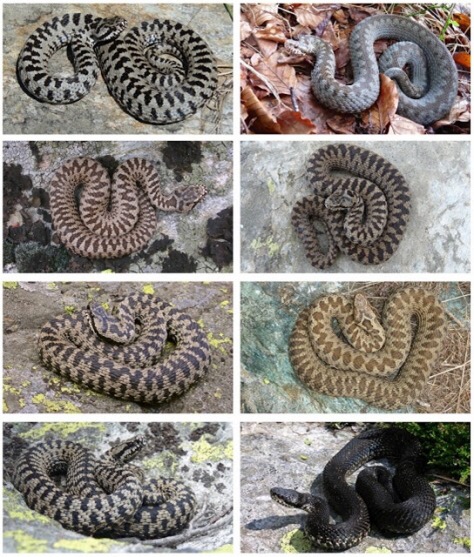A NEW species of European snake has been discovered but its survival is under threat as it faces extinction.
In a paper published in the Journal of Zoological Systematics and Evolutionary Research, scientists detail the discovery of a new viper species in the north-western Italian Alps, named Vipera walser.
The snake lives in an area of less than 500 sq. km and occurs only in two distinct sites within the high rainfall valleys of the Alps north of Biella.
Researchers recommend the viper is classified as globally endangered due to its small and fragmented range, and a predicted population decline.
Stuart Marsden, Professor of Conservation Ecology at Manchester Metropolitan University, part of the research team, said: “My own main interest in the new viper is in its conservation. The other species closely related to it are also either endangered or critically endangered, so the entire family is in serious danger of being lost.
“The new viper appears to be quite common in suitable habitat within its range – but the problem is that its range is tiny and its habitat needs quite specific. The species appears to inhabit open areas, often with rocky outcrops, and may not tolerate woodland. Areas like the Alps experienced a long period of expansion up to the 19th century, with large areas of the Alps converted to pasture and heathlands which were good for V. walser.
“However, the decline in agropastoral activities in the last 100 years has meant that woodland is regenerating and pushing the viper out. This is probably the biggest immediate threat to the species although culling and collection of specimens by enthusiasts is also a problem.”
The study began when something odd was noticed about adders and lizards in the mountainous region. First, there was a population of European adder, Vipera berus, in the area that was separated geographically from V. berus populations in the rest of Europe. More intriguing was that within this same area, the common lizard, one of the adder’s main prey items over much of its European range, was replaced by its ancestral egg-laying sister species.
This observation sparked a morphological and genetic study, which led to the discovery of the Vipera walser, which is remarkably distinct genetically from both the European Adder and other vipers occurring in western Europe.
Although the new species is distinct genetically from the European Adder, it looks quite similar. It can however be readily distinguished in most cases by counting the number of scales on its crown and around its eyes.
Detailed studies of the precise habitat requirements are now needed to determine how past and current land use changes have affected the species, and how they might be altered to benefit the species in the near future.







